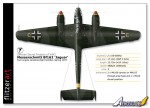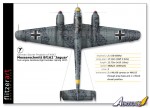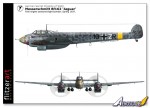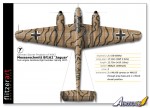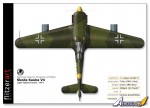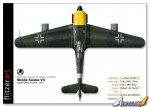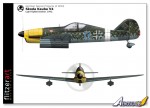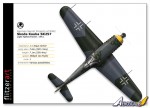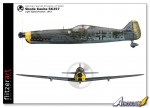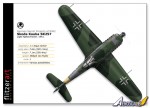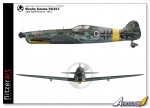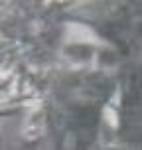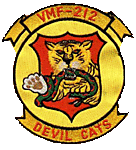1⁄1Luftwaffe Projects - Volume 9
10
Comments
Messerschmitt Bf162 ‘Jaguar’
Messerschmitt derived this aircraft project from the Bf 110 in response to a 1935 RLM specification for a Schnellbomber (Fast Bomber). The German propaganda department released a picture in 1939-1940 of this aircraft and called it the Messerschmitt Jaguar. A similar aircraft with a different nose and intended for the reconnaissance role was the Bf 161.Initially 65 aircraft were ordered in the 1937/38 programme but due to Messerschmitt’s commitment to the Bf109 and Bf110 programmes coupled with the superiority of the Jaguar’s build contract winning competitor the Junkers Ju88, this was reduced to 5 with only 3 being completed.
The first two models V1 and V2 were powered by Daimler Benz DB600D engines while the third model V3 was powered by two DB601A engines. The first two aircraft flew in 1937 the third on the 7th July 1938. The first aircraft (V1) was dismantled after it's initial flight trials, the second (V2) went to Rechlin and the third (V3) was used alongside the equally ill fated Me161 at Ausberg for towing the Me163A. Any common parts left over including the incomplete V4 and V5 were used in Bf110 production.
Skoda Kauba V4 and 257
Aesthetically, extremely attractive, the SK V4 possessed exceptional flying qualities, and from this design was evolved the SK 257 single-seat fighter trainer. The only Kauba design to be ordered into production, the graceful SK 257 single-seat fighter trainer never attained service status with the Luftwaffe.Kauba's extremely attractive design, the SK V4, was a single-seat fighter trainer powered by a 240 hp Argus As 10C-3 eight-cylinder inverted-Vee air-cooled engine. Featuring exceptionally clean lines, the SK V4 was a low-wing cantilever monoplane with a tail wheel undercarriage, the wide-track main members of which retracted inwards. Provision was made for the mounting of a single 7,9-mm MG 17 machine gun, an electrically-controlled variable-incidence tail plane was provided, and the structure comprised a one-piece wooden wing built around a single box spar, and a welded steel-tube fuselage with plywood skinning. Prototypes were ordered and built. One role envisaged for the V4 was for a Panzer killer, equipped with 2 underwing pods of 14 R4MP rocket tubes.
So successful were flying trials with the SK V4 that the RLM awarded Skoda-Kauba a contract for the development of a more powerful fighter trainer of generally similar configuration and construction. Designated SK 257, the new aircraft was powered by a 485 hp Argus As 410 twelve-cylinder inverted-Vee air-cooled engine, and four prototypes were completed. Again, the aircraft displayed exceptional handling qualities and performance, and the SK 257 fighter/trainer was ordered into quantity production for the Luftwaffe at a factory at Trencin on the Biskupice airfield in Slovakia. However, only five production SK 257 trainers were completed at Trencin, and because the manufacturing standard of these was abysmally low that they failed to pass the Luftwaffe quality control inspectors. The contract was immediately terminated.
Tailpiece – WN 19 Fighter
To finish Volume 9, rather than a full colour profile, I’ve included a keyline drawing of the mystery aircraft project Wn19. Only very recently official drawings dated 1938 have been discovered of a previously unknown aircraft. The drawings are genuine but there is some debate as to what reason the drawings were done and the designation Wn19. It seems to relate to a concept fighter, submitted as a graduation thesis at the Technical University Hanover by a student named Helmut Weitzmann, dated January 1938.What puzzles here is the RLM designation "8-19.00-02", giving it a "19", as well as a "Wn", as in "Wiener Neustadt Flugzeugwerke, a small aircraft company, still in Austria at that time. Did they produce the Wn19 drawings as a serious attempt to land a major project?
It seems more likely it is the work of the student Helmut Weitzmann. But watch this space.
The design looks similar to a Messerschmitt Bf109 but there are many differences. It is somewhat ‘dumpier’ and there are differences concerning the wings and tail.
Should you wish to see the drawings please visit:
http://forum.12oclockhigh.net/showthread.php?t=20235
References and credits
Websites www.luft46.comwww.secretprojects.co.uk
Books
Luftwaffe Secret Projects: Fighters 1939-1945 by Walter Schick and Ingolf Meyer,
Luftwaffe Secret Projects: Strategic Bombers 1935-1945 by Dieter Herwig and Heinz Rode.
Luftwaffe Secret Projects, Volume 3: Ground Attack & Special Purpose Aircraft by Dieter Herwig and Heinz Rode.
Jet Planes of the Third Reich Vols 1 and 2 by Manfred Griel
Reichdreams Dossiers by J. Miranda & P. Mercado
Secret Aircraft Designs of the Third Reich by David Myhra
Les Avions Dornier by Pierre Gaillard
Stukas by Herbert Leonard
Special Thanks
Special thanks to Dan Johnson of www.luft46.com,
Justo Miranda, Jemiba, members of www.secretprojects.co.uk for advice and data and our very own Rowan (Merlin).
That concludes Volume 9. For Volume 10 I have many projects from which to choose, but I fancy a change for the next set. I have a good number of both French and Italian secret design projects so may do a combined volume of these. We’ll see.
Comments
Cheers Peter
My pleasure. It's really impressive to see how your artwork increases steadily in sophistication with each new volume.
I'm intrigued by the mysterious Wn 19 - it does just look like someone's simplistic sketch of a '109, so it'll be really interesting to see if any firm information ever surfaces...
All the best
Rowan
OCT 09, 2012 - 08:08 AM
Many thanks JPTRR, nice to see you are still around site.
Rowan, should I learn of anything more on the Wn 19, I'll definitely share any findings. I'm sure there's a lot more to be discovered.
P
OCT 11, 2012 - 06:55 AM
Great work as always Peter, It's always nice to see a different take on the colour schemes and / or just to see these projects in colour. I do like the little Skoda 257 and the Fw-222.004, and then you tease with the last line 'Italian' for Vol.10, I can't wait, Re.2007 perhaps
OCT 11, 2012 - 07:45 AM
Wonderful stuff, as usual, Pater
Do you have any profiles of aircraft that saw combat during WWII (Spit, 109 etc)?
OCT 11, 2012 - 04:17 PM
Very interesting stuff, I hope to see more in the future.
Thanks for all the effort you put into this.
OCT 15, 2012 - 07:14 AM
Many thanks, I'm just enjoying myself really.
Luciano, Re2007....we'll see .
Mal.
I did do some profiles of some British aircraft that saw actual combat. It was years ago now but they were published on site.
I've not done any more since, apart from some early jets, as there are so many accomplished artists out there that cover these already, I've tended to seek areas that are less well populated if you see what I mean.
Tah muchly
Peter
OCT 19, 2012 - 03:33 AM
"....it was the first jet combat aircraft, the first twin-jet aircraft and the first jet aircraft to go beyond mock-up stage." not so "first" considering and other constructors of jet airplanes before 1941
DEC 26, 2018 - 05:17 AM
Copyright ©2021 by Peter Allen. Images also by copyright holder unless otherwise noted. The views and opinions expressed herein are solely the views and opinions of the authors and/or contributors to this Web site and do not necessarily represent the views and/or opinions of AeroScale, KitMaker Network, or Silver Star Enterrpises. Images also by copyright holder unless otherwise noted. Opinions expressed are those of the author(s) and not necessarily those of AeroScale. All rights reserved. Originally published on: 2012-10-06 00:00:00. Unique Reads: 15547




